1963 Austin Mini Cooper
2023 marks the 60th anniversary of the Mini Cooper S – and this example is the oldest survivor. Mark Dixon tells the story of a Mini that has truly lived a life.
Photography Dean Smith
THE S FACTOR - 60 years of the original pocket rocket
60th anniversary of the buzzbomb that gave performance to the people
Appropriately, there’s a modern Mini Cooper (or, as BMW would have it, MINI Cooper) hard on our tail as we cross the M40 motorway and leave Banbury behind. A few minutes ago we were tucked up in a warehouse-like photo studio on one of its sprawling industrial estates, but now, after a long day photographing the car you see here, there’s time to spend a few minutes playing. Although this Mini Cooper S has a top speed of 95mph, its peppy-for-the-time acceleration is no match for the modern car’s, driven by a commuter who is clearly quite keen to get home. But then we arrive at the first of a series of sharp, 90º corners – and suddenly the balance of power changes…
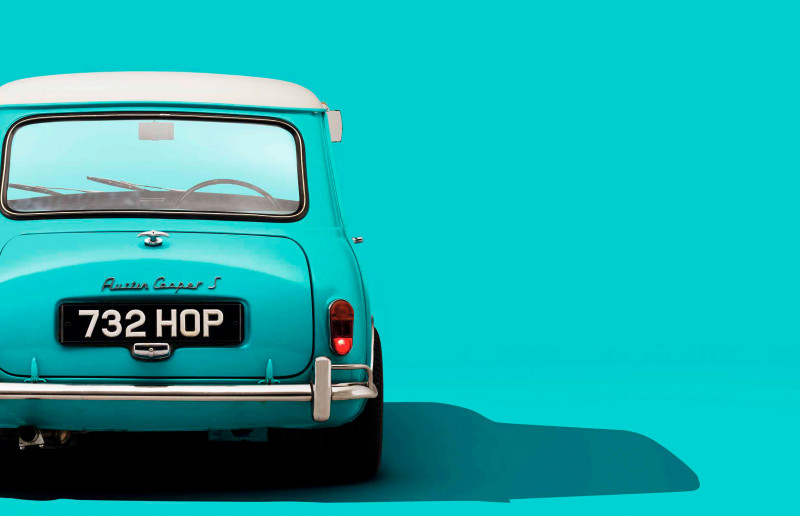
‘732 HOP is known to have competed in 126 motorsport events from autotests to stage rallies’
Yes, it’s all true. Everything you’ve read about the Mini Cooper’s handling is gospel. This tiny car simply rockets around the first corner as if it’s on rails. By the time we’re halfway along the next straight, the following MINI is only just exiting the corner; after the next bend, it’s so far behind that the driver has decided his tea can wait another few minutes. In a contest of Mini versus MINI, David still has a few tricks to show Goliath. This giant-killing ability has been a large part of the original Mini’s appeal since it first appeared in 1959, of course, even with the ‘cooking’ 848cc single-carburettor engine. Unlike every preceding BMC car since the Morris Minor in 1948, the Mini (retrospectively known as the Mini 850) was genuinely revolutionary, with its transverse engine, integral gearbox sharing the engine oil, front-wheel drive and rubber-cone dry suspension. Light weight and the wheel-at-each-corner design gave the Mini superb handling that went a long way to compensate for its modest 34bhp power output.

Within days of the car being launched it was being used for competition: BMC unveiled it to the world on 26 August 1959 and on 18 September a lightly prepped 850 was taking part in the Viking Rally, based around Oslo. Entered by the BMC Comps Department, its real purpose was to support Pat Moss and her Austin A40 in an event where support vehicles weren’t allowed, but Comps manager Marcus Chambers still brought the Mini home in 51st place.
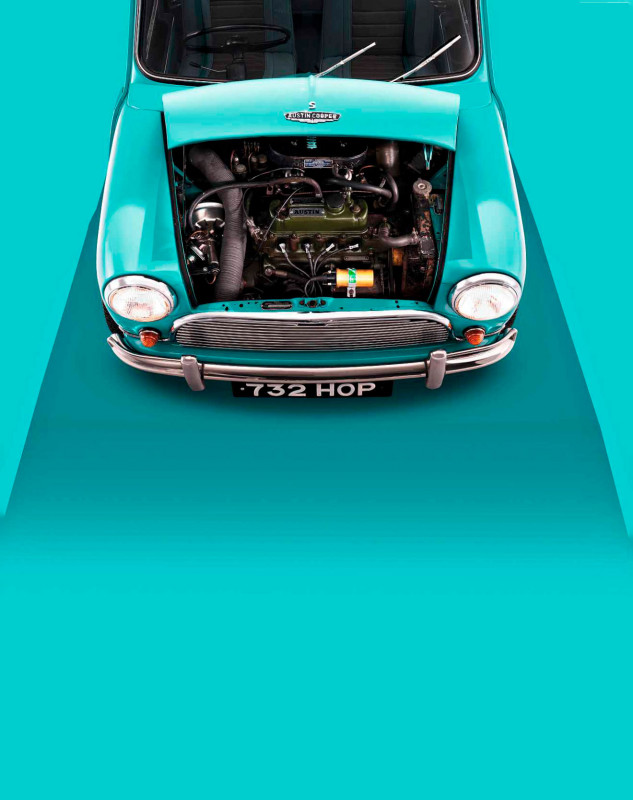
Like its pre-war Austin Seven predecessor, the Mini democratised motorsport. It was an affordable car for the enthusiast on a budget yet it was also seriously competitive. In 1961, up-and-coming saloon car racer John Whitmore – who had yet to inherit his father’s baronetcy to become Sir John – bought a well-used Mini 850 from the BMC Comps Dept at Abingdon for £400 and won the British Saloon Car Championship with it. In fact, he was so far ahead in the points table that he didn’t actually need to race in the final round at Brands Hatch to secure it – so he lent the car to a keen amateur racer who was visiting from America.
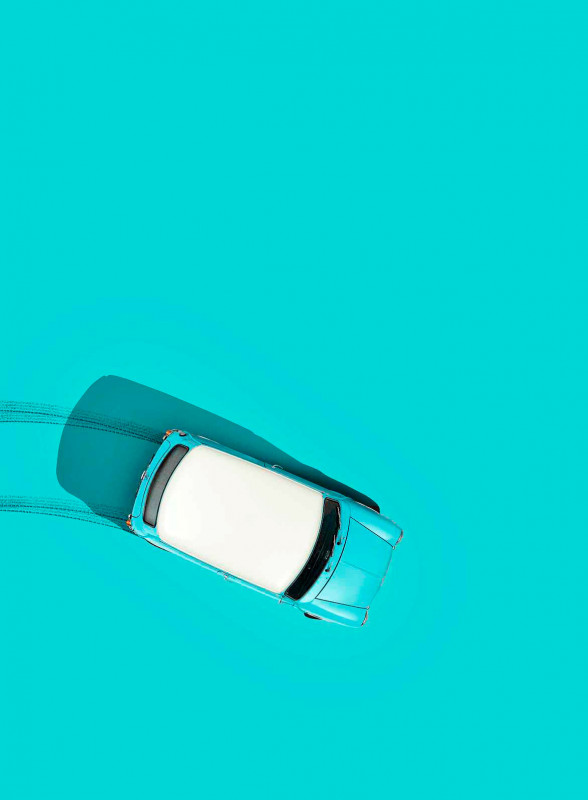
Whitmore had never heard of this chap, who was also an actor, but after meeting him in London for a chat he agreed that he could borrow the Mini for the race at Brands. His name was Steve McQueen.
The irony is that the Mini was never intended to be even a remotely sporting car. Its creator, Alec Issigonis, envisaged it purely as an inexpensive runabout, to the extent that the 948cc engine carried over from the A35 was deliberately downsized to 848cc because Issigonis considered it unnecessarily powerful. If the 948 had been carried through as originally proposed, the Mini would have had a 90mph top speed from the start, instead of the 850’s good, but not outstanding, 72mph.
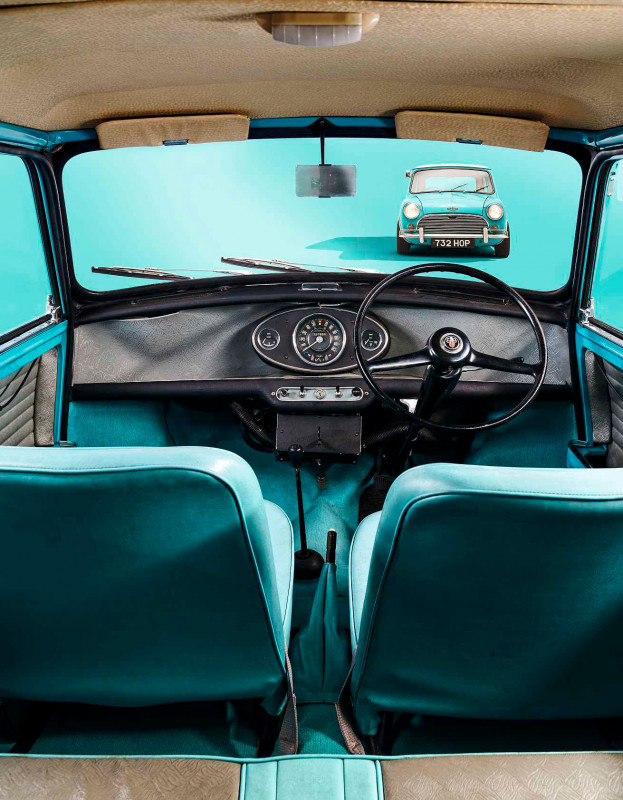
So, while the car’s excellent dynamics made it of immediate interest to ‘sporting’ drivers, it wasn’t until the Mini Cooper arrived in late 1961, with its A-series bored and stroked to 997cc and breathing through twin SUs, that the Mini really set the cat among the oversized, plump-breasted pigeons. This was all thanks to World Champion race car constructor John Cooper, who had ‘form’ with the BMC A-series engine in his Formula Junior – and who also happened to be a good friend of Issigonis. He was therefore able to borrow an early 850 and drive it to the 1959 Monza Grand Prix, where ex-Ferrari engineer Aurelio Lampredi, then at Fiat, blagged a long test drive and is famously said to have remarked on his return: ‘If it weren’t so ugly, I’d shoot myself!’
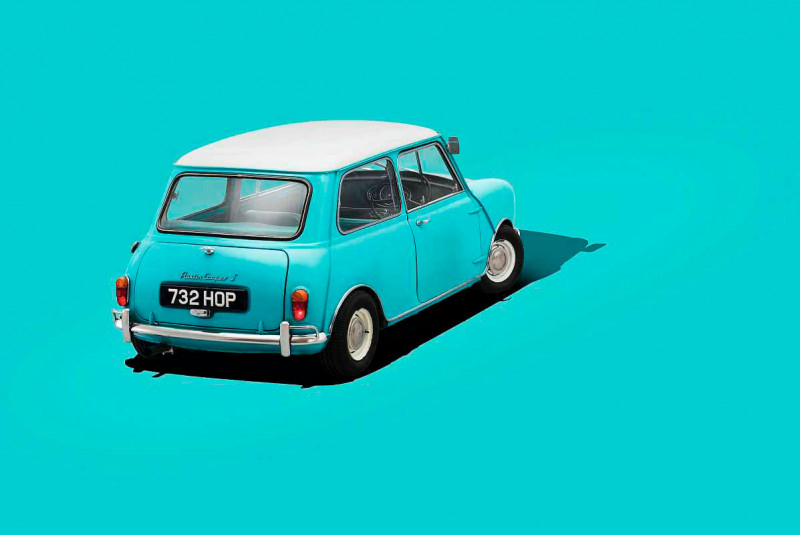
Cooper immediately realised the potential of BMC’s baby car and approached the new company boss, George Harriman, to see if BMC would build a limited run of ‘hot’ Minis for homologation purposes. Harriman was doubtful that they could sell the 1000 cars needed for homologation but, according to John Cooper’s son Mike, ‘My father replied: “You don’t have to build them; just say you did!”’ In the end a deal was struck whereby BMC would develop a production version of the prototype that Cooper had worked up from a standard 850 using Formula Junior engine parts, and would sell it through its UK dealer network. John Cooper would receive a £2 royalty on every car sold, and would back the Cooper Car Co as the official works team in saloon car racing.
The resultant 997cc Mini Cooper was a sales success – but the standard A-series had been bored out as far as it could reasonably go. So Morris Engines and Downton Engineering redesigned it. Siamesed bores, larger big-end journals, a nitrided crankshaft and big-valve cylinder head were all features of the totally reworked unit, now much shorter in stroke (68.2mm instead of 81.28cc) for faster revving, and considerably larger in capacity at 1071cc. The new, bigger-engined Cooper was dubbed the Mini Cooper S.
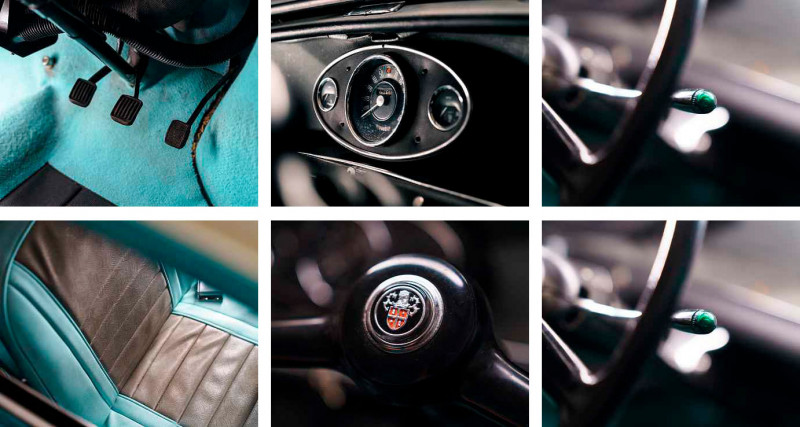
The ‘S’ celebrates its 60th anniversary in 2023 – and what we have here is the oldest survivor, one of two preproduction models built early in 1963 and given the consecutive registrations of 731 and 732 HOP. They were allocated for publicity and press purposes, and 731 helped propagate the Mini Cooper mythology when it appeared in episodes of the TV series Danger Man, driven by Patrick McGoohan’s character John Drake. Although the logbook of 731 survives, the car itself has not been seen for decades – but 732 HOP, our feature car, is very much still with us. Well, sort of. ‘The car may have already been reshelled by the time I and my sister bought it in 1976,’ confesses owner John Pick, who makes absolutely no bones about the fact that his Cooper retains very few of the parts with which it left the Longbridge line on 6 March 1963. What it does have, however, is impeccable and continous history – and when you learn that 732 HOP is known to have competed in 126 motorsport events, ranging from autotests to hillclimbs to stage rallies, you can understand the extensive rebuilding.
‘Early Minis were just old cars in the mid-70s,’ explains John. ‘We saw 732 HOP for sale in the classified ads in the back of Motoring News and at the time it was just another old Mini with wheelarch extensions. My sister was at uni’ but I was still at school when we started rallying it, with her driving and me navigating.’
During the Mini Cooper’s production cycle, several variations of the A-series engine were used. Besides the 997 and 1071cc units already mentioned, there was a 998cc version (this replaced the 997 in late 1963 and ran to November 1969, making it by far the biggest seller at 55,760 units) and a super-short-stroke 970S designed for the European one-litre racing class, and available only from June 1964 to April 1965. King of the hill, though, was the 1275S, launched in March 1964 and which propelled the Mini to its famous Monte Carlo Rally victories in ’65 and ’67 (and, by any reasonable measure, ’66).

John Pick’s Cooper has had most of these fitted – and more besides. ‘It was built as a 997, which was then taken off the production line and re-fitted with a 1071 to turn it into a Cooper S,’ he explains. ‘But when we bought it in 1976 it had a 998, which didn’t run very well, so we replaced it with a healthy 998 and then, when its crank broke, with a 1400cc A-series. But that made insuring it tricky so we put in a stock 848… It wasn’t until the late 1990s – when I finally realised the historical significance of the car – that I tracked down the correct 1071 unit, as part of a total rebuild.’
So, John, exactly how much of the original 732 HOP is now left? ‘Not very much!’ he grins. ‘The front hubs, for sure, and probably the brake calipers; the steering rack, possibly the steering column – and definitely the speedometer, which is a rare early part.’
This is par for the course for an early Cooper, however. Cars that are used for motorsport tend to get frequently damaged and regularly rebuilt – and, of course, in the 1960s they rusted. Badly. 732 HOP was certainly in a very nonoriginal condition by 1976, when John Pick and his sister bought it. ‘Back then it had wheelarch extensions, a glassfibre boot and bonnet, Perspex windows, and just one seat,’ he explains. ‘It had been repainted a Triumph red instead of its original Surf Blue with white roof, and there were traces of yellow paint beneath that. Later, my sister upgraded to a Peugeot 504 for rallying and I bought out her share of the Mini. But I knew nothing of its significance until the mid-1990s, when someone told me it could be a really early car. I wrote to the archivist at British Motor Heritage, Anders Ditlev-Clausager, who informed me it was the second Cooper S built, with the second 1071cc engine.’
John had already re-shelled 732 HOP himself by then, back in the late ’70s, after an ‘incident’ during a rally. ‘I’d rebuilt it into a Mk3 Mini shell, transferring the running gear, and used it for another 10-15 years, doing all the usual things – it got rolled, was crashed – and so it was pretty tired by the 1990s. But it was clearly an important car and I was wondering what to do with it when British Motor Heritage approached me in 1996 and asked if they could rebuild it at a classic car show at their expense, to promote their forthcoming new Mini bodyshells.’
Sounds great? Well, it was both good news and bad news, as John explains. ‘Problem was, they had most but not all of the necessary tooling at the time – so in the end we used yet another secondhand donor bodyshell, and stripped all the parts out of the old Mk3 shell, ready to transfer. The first phone call came in from BMH in early February, when it became clear that the car show was not – as I’d assumed – happening at the NEC in Birmingham, but Essen in Germany! And it was in early April… I managed to have all the dismantled parts refurbished by then, but there was no time to do a dry run ahead of the show. In the end we got the car built up over the three days of the show and there was just one part missing – the lead to the starter motor from the solenoid – but we found one in the autojumble!’
Soon after its Essen rebuild – its third re-shell – a classic car magazine took the Mini on a road trip to the South of France, and then John decided to enter the classic class of the Midland Hillclimb Championship, which he continued doing for another five or six years. Then he stripped the car to a bare shell yet again…
‘Unfortunately, when the car was painted – not by BMH – ahead of its Essen build, it was allowed to get damp between the primer and the top coats, and the result was rust bubbles and even whole strips of paint falling away. So this time I had the shell e-coated, which involves electrostatically charging the metal and dipping it in a huge vat of paint, which is drawn into all the seams and crevices. This was in 2006-07, and I haven’t done as many hillclimbs since, but it’s not a concours car or a trailer queen; we just go out in it and have fun, whatever the weather.’
While 732 HOP is now in the closest to original condition it’s been since the early ’60s, it’s not 100% ‘as built’ and is unlikely ever to be. That’s partly because John is not a rivetcounter and partly because these early Coopers did have their flaws. For example, the cylinder head is a later part; the originals were very prone to cracking between the exhaust seats and, as John says, what’s the point of swapping back to an inferior component in a car that’s used and enjoyed? In fact, BMC itself changed parts on its press cars to reflect production changes and keep them up-to-date. For example, 732 HOP left the line without a heater, yet it had acquired one by the time it was being magazine tested later that year.
As part of his quest to restore 732 HOP to its 1963 state, John started digging into its past history and trying to track down previous owners. Factory records state that 732 was retained by Austin’s publicity department until 4 December 1964 (it was road-tested by Autosport’s Patrick McNally in its 23 August 1963 issue) and then sold as a used car to a Mr J Pugh of Sambourne, near Redditch, south of Birmingham. He’s the only person John has not been able to trace.
John’s stroke of luck was that the chap he’d bought it from in ’76 was a motorsport scrutineer and his contact details were still in Motorsport UK’s ‘Blue Book’. He’d only owned it for a couple of years but was able to give John the address of the owner before that, a John Walker. Remarkably, the two Johns turned out to live just three miles apart. ‘John Walker told me that he’d bought 732 HOP from a used-car lot and it was him that had repainted it red. He was also able to lend me a lot of pictures of the car being driven by him on rallies, and cuttings that listed the results. The acronym “DNF” does seem to appear rather a lot!’
Maybe so, but it’s intriguing to spot the names that appear alongside John Walker’s in these results – future stars such as Russell Brookes and Will Sparrow, then competing on provincial road rallies early in their careers. It’s equally fascinating to see the snapshots from a time long before 732 HOP’s early history was appreciated. Here, for example, is a red-painted 732 slithering along a muddy stage in 1971 or ’72, with flared ’arches over Mamba alloys, a single roll-over hoop in the cabin, and rubber catches securing the bonnet. ‘I remember those catches,’ says John. ‘I forgot to do them up one day, and the bonnet flew up and broke the ’screen.’
John’s time with 732 HOP has not been without incident since its most recent restoration, either. ‘I was waiting at some traffic lights when a truck in front of me started reversing without warning and, because I had a car behind me, all I could do was sit and watch it back into me.’ While the badly creased 732 was straightened out again, look closely and you can still see the evidence in the shutlines – but, then, 732 HOP was never built to concours standards in the first place. John has copies of the original prints used for the 1963 Autosport road test and they clearly show that 732 had pretty shocking panel fit, even by the standards of the early ’60s. There’s a considerably wider gap, for example, between the bonnet and one front wing than the other.
But who cares? The car still drives brilliantly. Fold yourself behind the bus-like, thin-rimmed wheel and you’ll be astonished at just how much room there is up front. Because there’s no transmission tunnel, thanks to the front-wheel drive, there’re acres of space for your feet, plenty of headroom and lots of elbow room, too, since there’s only a sheet of doorskin between you and the outside world. And, of course, you pull the door to by yanking on the metal side pocket or the window sill, and you open it again by tugging down on a cable that works the door lock.
The ‘pudding stirrer’ gearchange is supposedly a lot better than that on the earliest Minis, thanks to a remote linkage, but there’s still plenty of slop (to be fair, this one may need re-bushing); on the credit side, the ’change action is as light as you’d expect. Get the car moving and first gear turns out not to be the ultra-low ratio that typified so many older British cars of the 1950s; in fact, according to the yellow telltales on the speedometer rim, it’s good for 30mph. Those same markings suggest that you can hang on to second and third to 50mph and 70mph respectively, while 95mph would be your absolute maximum. John confirms that the car has a sweet spot of 80mph. Incredibly, the engine is ‘safe’ up to about 8000rpm.
You don’t have to rev the pushrod nuts off it, however, since there’s a decent amount of torque in any gear, which helps the car’s sprightliness – it’s quite hard to resist the temptation to gun this little buzzbox everywhere, especially since its tiny dimensions encourage the exploitation of gaps that are denied to today’s bloated barges. The A-series is a friendly engine, eager and willing to show you what it can do, rasping fruitily as you row it along on the gearlever. But it does cry out for a fifth gear; at 60mph your left hand will be instinctively searching for that phantom extra ratio.
Even with sparkling-for-the-time acceleration figures of 0-50mph in 8.1sec and 0-60mph in 12.25sec (the former achievable in second gear), you’ll struggle to outpace just about any modern car almost six decades later but, as our MINI driver found out, it’s a different story on a roundabout or a really tight and twisty road. Here the car’s super-light weight, pinsharp steering and shopping-trolley wheels allow it to change direction like a slot-car. It corners pretty much flat and, unless you’re driving like an absolute loon, quite neutrally, shading into understeer only if you really push it. The ride gets slightly choppy on a back road – 10in rims and a 6ft 8in wheelbase are never going to offer limo levels of luxury – but Issigonis’s revolutionary rubber-cone ‘dry’ suspension works incredibly well.
Production of the Cooper 1071S ended in 1964, after roughly 4000 cars had been built. It had firmly cemented the Mini legend, especially when Paddy Hopkirk and Henry Liddon won the Monte Carlo Rally with one in 1964 – and appeared in front of 20 million TV viewers, with the car, a few days later on Sunday Night at the London Palladium – but it was now the 1275S’s turn to take the Mini to new heights of competition success and cultural impact.
To quote the lyrics of one famous Mini owner, however, All Things Must Pass (George Harrison’s psychedelically painted ‘S’ is the most famous of the four Minis given to The Beatles by Brian Epstein), and by the late 1960s its star was on the wane. On the racetracks and rally stages it had been outshone by fresh comets such as the Escort Twin- Cam, while the glamorous set had moved on to colonise metaphorical new worlds.
We’ll probably never know how 732 HOP was being used in the late ’60s and early ’70s, when the Cooper S was being quietly put to sleep by the accountants at British Leyland – the old Competitions Department was closed in 1970 and the Mk3 1275S, with its single-tone paint, looked little different to any other Mini; launched in March 1970, it was finally axed in June 1971. Perhaps the elusive Mr J Pugh of Sambourne merely drove 732 HOP to the shops, or took his wife in it to her hospital appointments, or enjoyed weekends in the Peak District after cramming its boot with camping gear and hiking boots. If so, it was doing just what it was designed for and Issigonis would surely have approved. From magazine star to suburban runabout, then rally warrior to cherished classic, 732 HOP has lived as full a life as could be imagined for any car. Happy 60th birthday!
‘It’s hard to resist the temptation to gun this little buzzbox everywhere’
This page Mini interior is simple but incredibly spacious, especially up front. Luxuries are limited to an ashtray above the central binnacle – and an optional heater
Above Details of a significant survivor: 732 HOP has undergone many transformations since its 1963 road-test appearance in Autosport and its recent immortalisation as a diecast toy (middle right).
TECHNICAL DATA 1963 Austin Mini Cooper S
- Engine 1071cc OHV four-cylinder, two SU HS2 carburettors, integral gearbox
- Max Power 70bhp @ 6200rpm
- Max Torque 62lb ft @ 4500rpm
- Transmission Four-speed manual, front-wheel drive
- Steering Rack and pinion
- Suspension Front: double wishbones with rubber cone spring units, telescopic dampers. Rear: trailing arms with horizontally acting rubber cone spring units, telescopic dampers
- Brakes Front discs, rear drums
- Weight 635kg
- Top speed 95mph
- 0-60mph 12.25sec


